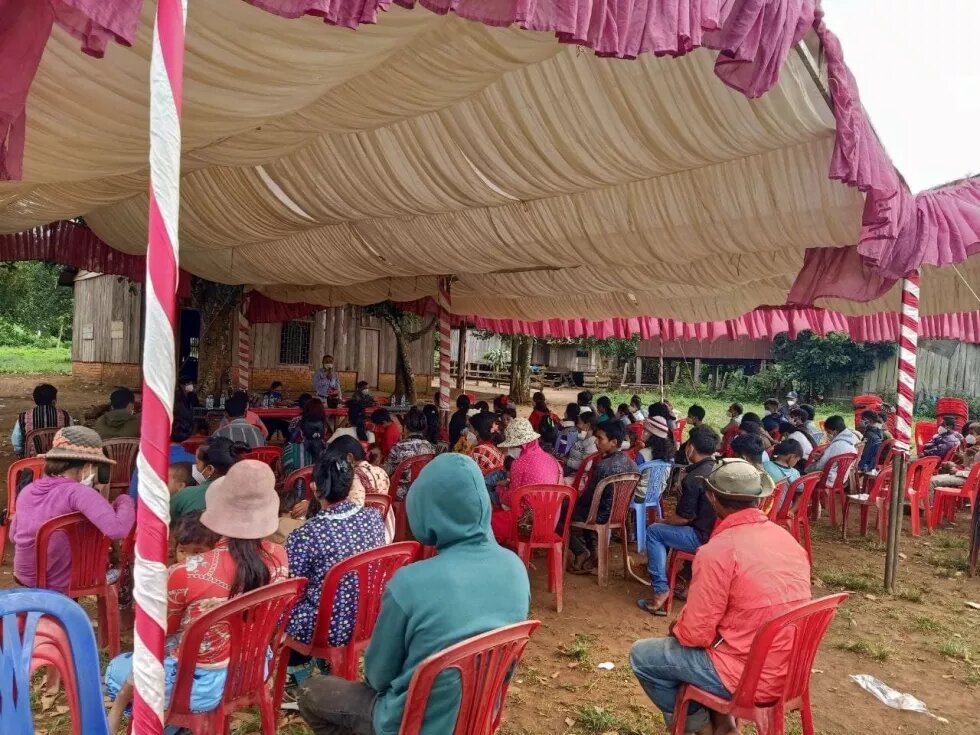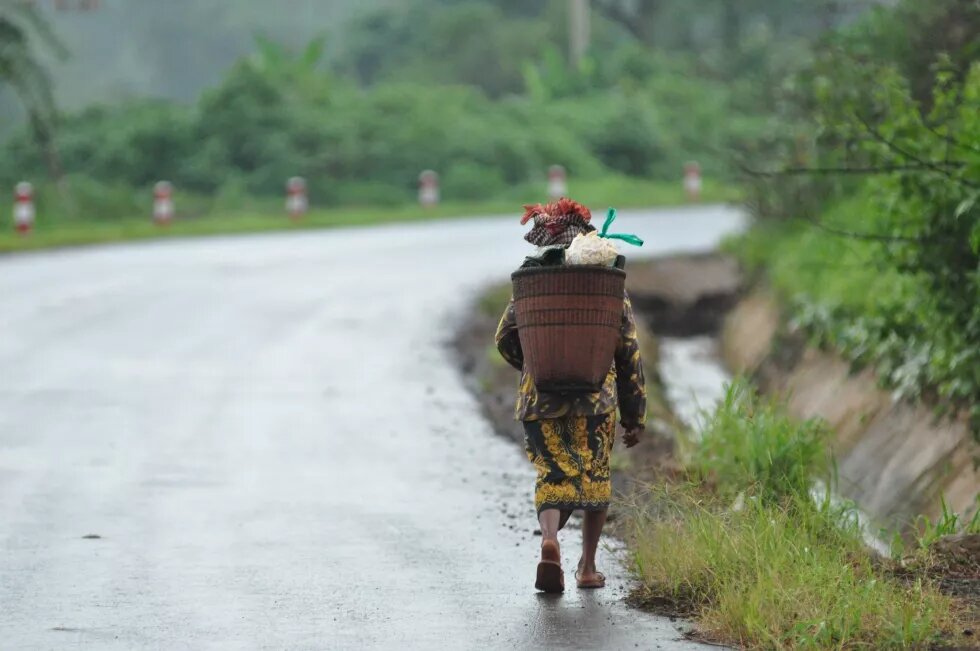
Cambodia’s laws for preserving indigenous land were enacted over 20 years ago but are increasingly difficult to navigate and achieve official legal recognition for its indigenous peoples.

The indigenous population of Cambodia consists of 400,000 people, which is equivalent to 1.4% of the country’s total population. Most of the communities live across Ratanakiri, Mondulkiri, Kratie, Stung Treng, Kampong Thom, and Preah Vihear provinces. The communities' core sources of income have traditionally been non-timber forest products (NTFPs), such as liquid and gum resin. Paddy cultivation is considered their main livelihood source.
Cambodia established Land Law in 2001 which divided into state public land, state private land, and communal land title. The communal land title was intended to publicly recognize community land held by 24 indigenous communities. However, some communities’ boundaries primarily overlapped with state public property, the majority of which the government reallocated as state private land, and granted to international and local investors in the form of economic land concessions.
How did communal land titling start?
Article 23 of the Land Law defines indigenous communities as legal bodies for communal land ownership. It allows indigenous people to obtain communal land titles to their lands and safeguards indigenous peoples’ rights to use and administer these properties until full ownership rights are recognized. However, the Land Law alone does not provide specific guidelines for communal land titling.
In 2007, the government supported the UN Declaration on the Rights of Indigenous Peoples (UNDRIP) which allows indigenous peoples to own the land and use it as they please. In 2009, the government issued Sub-Decree No. 83 on the registration procedure of communal land, which details the processes of achieving communal land title. The procedure is complicated and involves three different ministries including the Ministry of Rural Development, the Ministry of Interior, and the Ministry of Land Management, Urban Planning and Construction.
The communal land titling program has been successful in preserving traditional culture, protecting land security, and improving the livelihoods of indigenous people. However, components of the procedure should be simplified and properly communicated to them. In response to the indigenous people’s request, the Ministry of Interior and the Ministry of Rural Development worked with organizations that support indigenous peoples to review the internal rules in 2021.
Communal land titling delays and reasons
By June 2021, the Ministry of Rural Development recognized 193 communities while the Ministry of Interior acknowledged the legal entity of 153 communities. The Ministry of Land Management, Urban Planning and Construction issued communal land titles to 43 out of 455 communities by 2024. However, Cambodia’s strong laws for preserving indigenous land are bogged down because of its exceptionally complicated, lengthy, and costly procedures, bound by technical regulations.
Mr. Yun Lorang, secretary-coordinator for Cambodia Indigenous People Alliance (CIPA), has noted that the process takes at least three years, and they are still awaiting a successful application. The United Nations in Cambodia stated that it may take 100 years for all indigenous peoples in Cambodia to receive the communal land title. For the time being, the provided explanation is the long nature of the procedures.
Bunong community has been waiting for the communal land title since 2011, with no updates. Mr. Klang Thol, from the Bunong indigenous group, has outlined that they are hopeful every year but the forests continue to be encroached upon. The group wishes to preserve and conserve the land but is still awaiting official legal rights to land that is theirs.
Some of the communal lands are overlaid with the protected areas and corridors administered by the Ministry of Environment. The ministry has maps of these areas, but this information has not been shared with the Ministry of Land Management, Urban Planning and Construction. Therefore, the ministry must identify the location of the planned communal land title if it overlaps with the protected areas and corridor areas, and obtaining this information typically takes a lot of time. The Ministry of Environment is opposed to accepting larger land areas in protected areas, however when the ministry grants a smaller parcel of protected land, the community objects.
Since the opening of Cambodia’s economy in the 1990s, 330 economic land concessions have been approved. In some cases of communal land titling, the land is granted to private companies in the form of economic land concessions. Extra negotiations between the ministries and private companies are required before the communal land titling process can begin. When this occurs, it is typically the economic interest that wins out, and some argue that land grabs in Cambodia are the results of “government design” rather than “government monitoring”.
It is indigenous peoples who are the most vulnerable group. The Kui people should have obtained communal land titles and be able to legally use the land they have occupied for centuries under the law. However, as of late 2020, the Kui are still fighting for their land. In March 2022, 200 indigenous people banded together to protest against a company that received economic land concession approval from the government, encroaching on the collective land in Sokh Dom commune, Sen Monorom district in Mondulkiri province.
Some indigenous communities are turning away from communal land registration because their applications for indigenous communal land titles (ICLT) take too long. They need access to microloans, which require land titles as collateral. Land under a communal title cannot be mortgaged or sold outside the community. So, as their ICLT applications take years to process, many villagers have already borrowed money using their land. They cannot afford to lose this option due to their heavy debts. This is also one of the reasons hindering the ICLT process in Cambodia.
Our ongoing loss: nature, livelihoods, culture
The communal land titling policy was initially meant to offer communal land titles to indigenous peoples so that they could safeguard and prevent others from encroaching on their ancestral lands. The forest policy and the leopard-skin program under Order 01 however have turned substantial areas of their communal land into community-based or state-public land, paving the way for encroachment. Order 01 land titling is different from the systematic land registration procedure. It was founded outside of the formal registration system and was privately sponsored by Prime Minister Hun Sen until 2015. The program was quite active until the 2013 election, after which it decreased dramatically. Titling was restarted on 30 December 2013. Researchers highlighted serious concerns about the campaign's concept and implementation, which were widely perceived as political and militaristic.
Indigenous peoples have voiced concern about the time it would take to receive a communal land title. The delay in communal land titling enables corrupt businessmen the opportunity to illegally seize the land. If the government takes too long to offer communal land titles, indigenous peoples will have no land to register due to unlawful land grabs. They will lose their identity, heritage, and culture if they do not have full rights to keep their common land without a communal land title, Mr. Phorn Sotheara, from the Tumpoun indigenous community, has indicated.
Indigenous people have cultivated resin trees, collected bees, and extracted other natural resources in the forests around their community. They will lose their livelihood as thousands of resin trees are taken down. Only communal land title can conserve their lands as well as natural resources and wildlife creatures. It is in the hands of the government and NGOs to support indigenous peoples in obtaining communal land titles, or else land grabbers will persecute them.
Mrs. Koem Chhuonvuoch is NRM Program Coordinator at Open Development Cambodia


